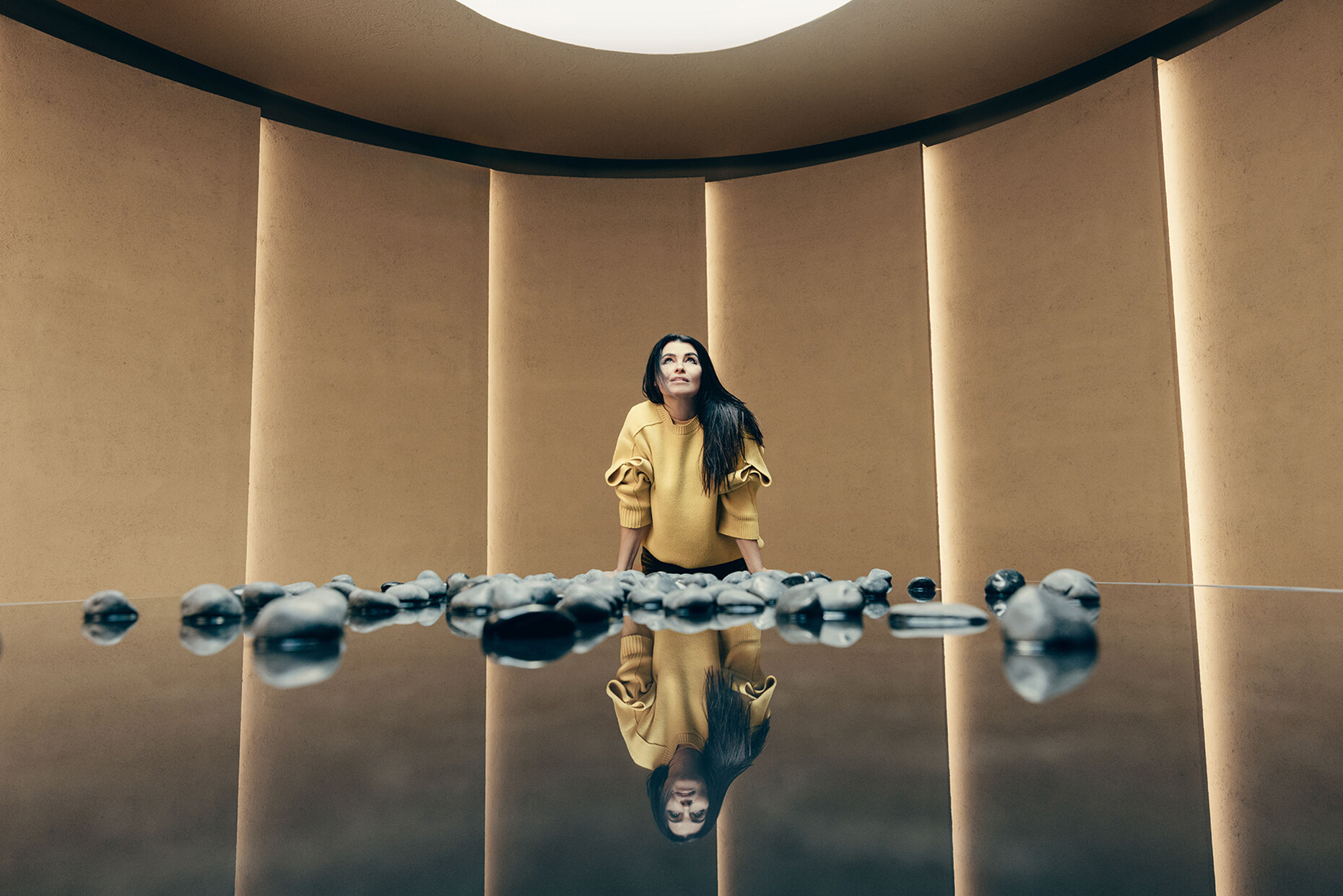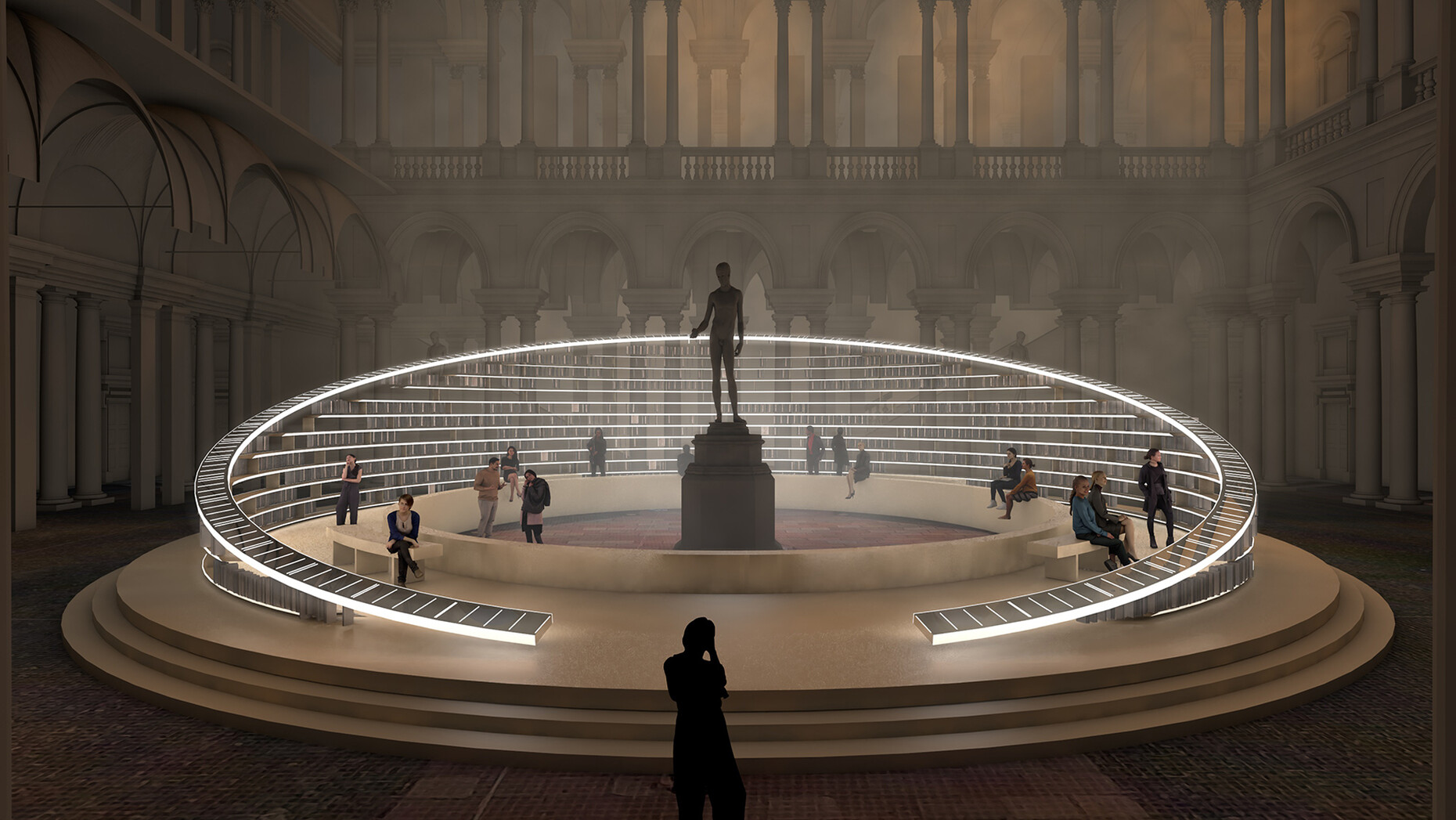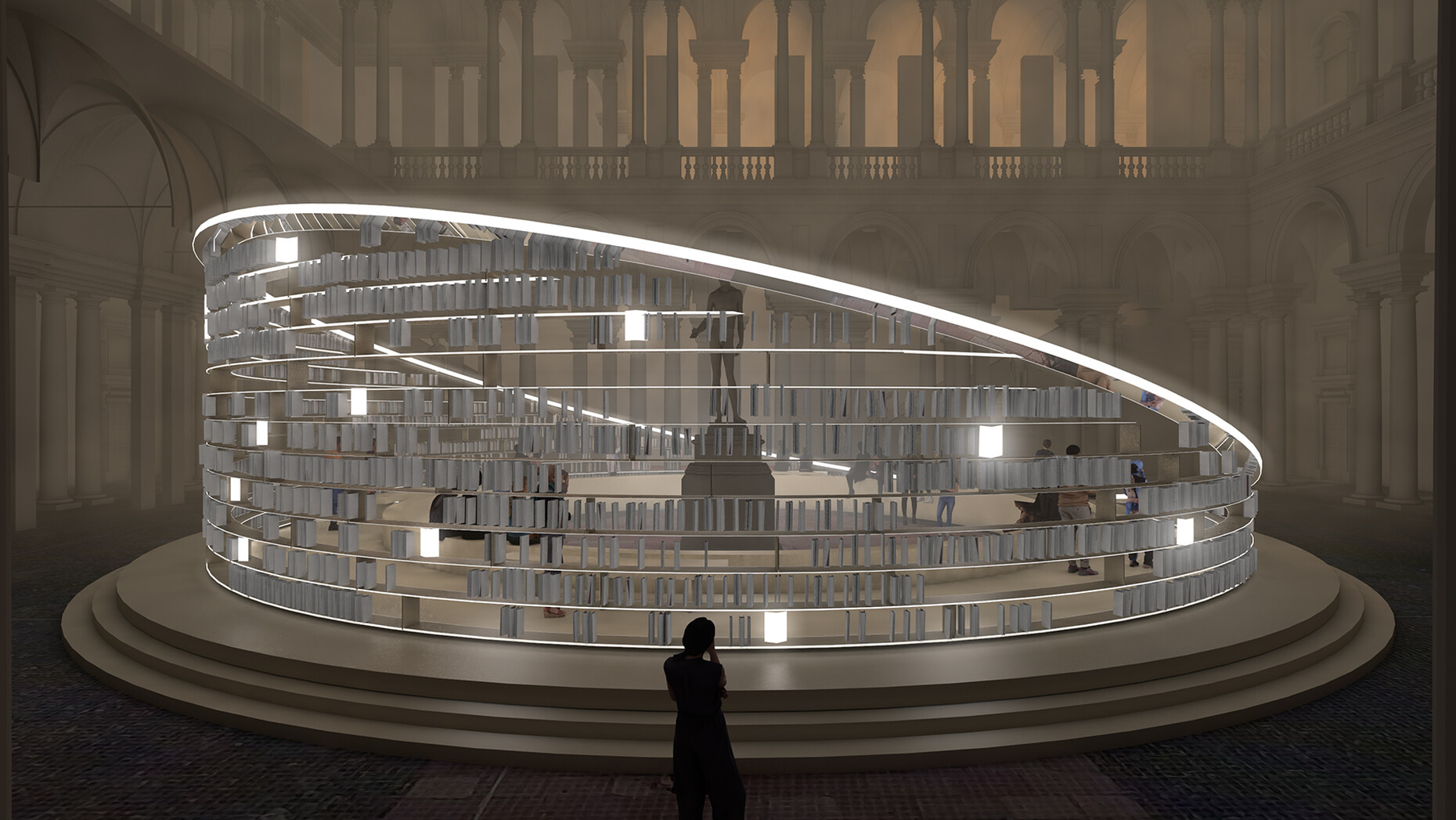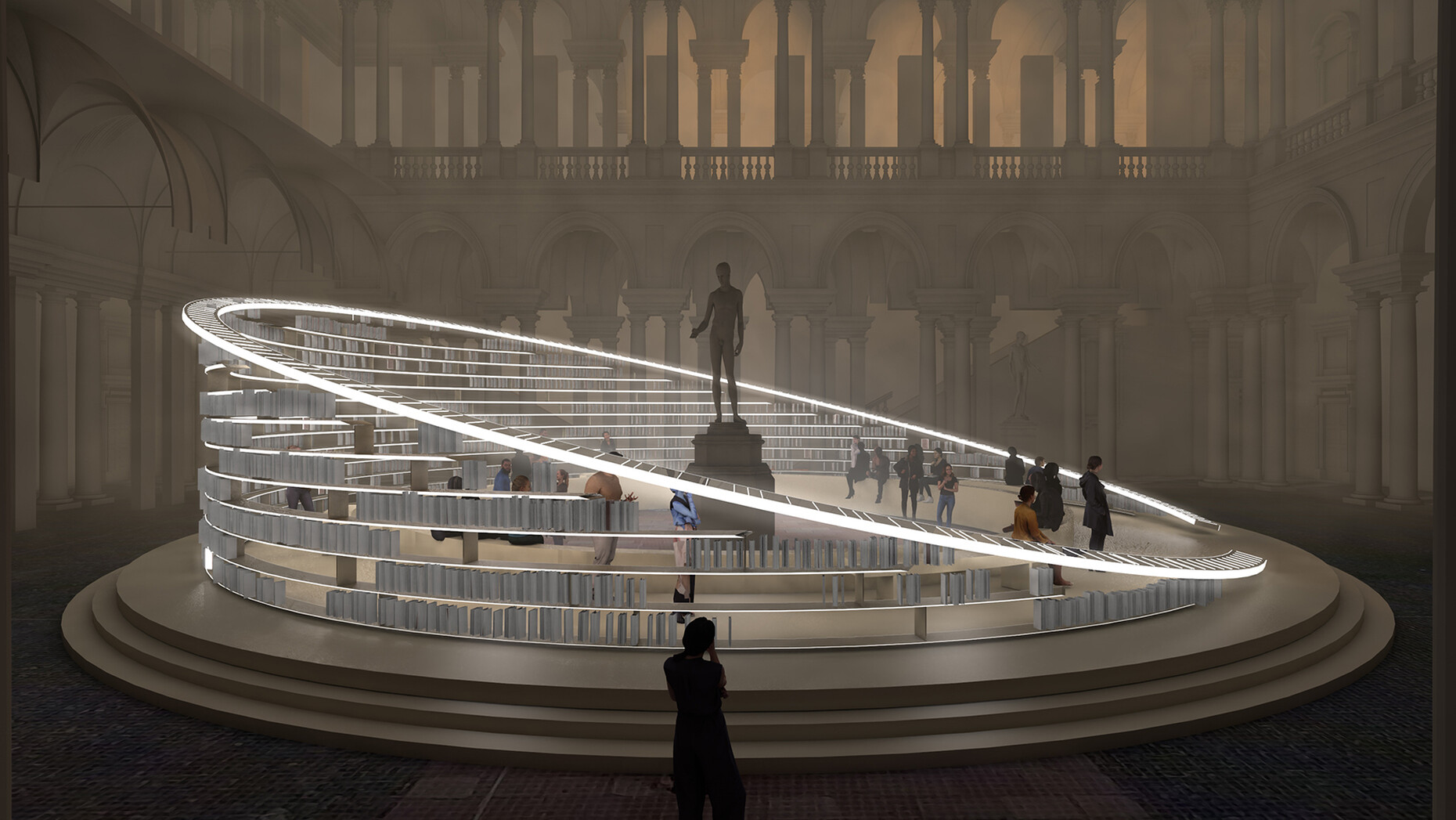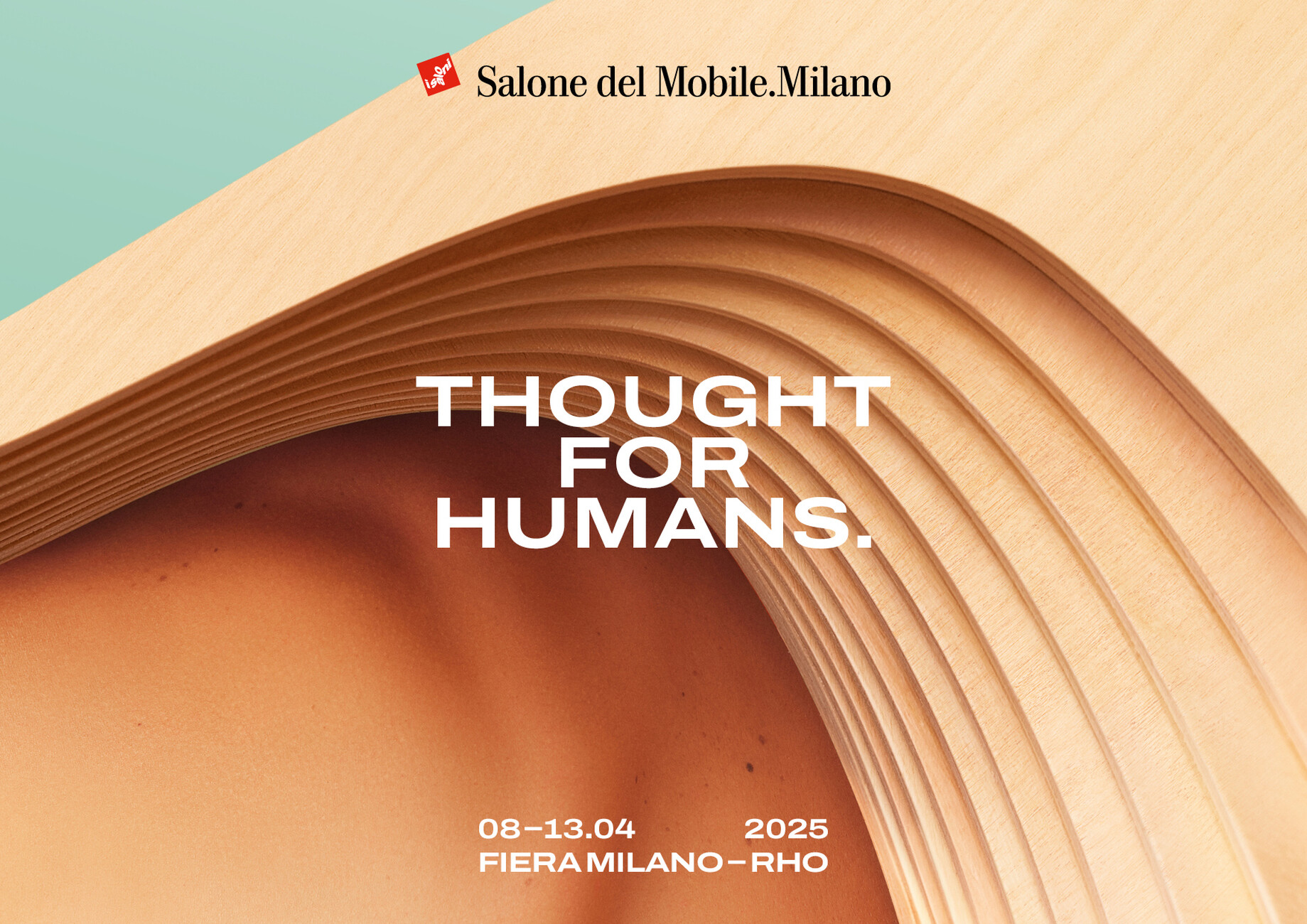PREVIEW – SALONE DEL MOBILE 2025
Compass for the mind
Anna Moldenhauer: You do a lot of research for your work beforehand – the ‘Library of Light’ is therefore a metaphor for knowledge on several levels. Furthermore it will be located at a historically significant site. How do you filter which information flows into the result?
Es Devlin: When do you stop researching? I think the short answer is never: every project is ongoing. At the same time, at some point the research has to be shaped into something that will resonate with both those who are encountering the Pinacoteca for the first time, and those who study and work here daily. The revolving library ‘reads’ text aloud, in my voice and that of the British actor Benedict Cumberbatch. As Jorge Luis Borges said: ‘I am not sure that I exist actually, I am all the writers I have ever read’, and my choice of texts is very personal: they are the lenses through which I view the world. Benedict Cumberbatch reads The Order of Time by physicist and poet Carlo Rovelli. I read from a range of authors including Adrienne Rich, James Baldwin, Audre Lorde, David Abram, Toni Morrison, Ralph Ellison, Octavia E Butler, Iain McGilchrist, Amitav Ghosh, Lewis Hyde, Jorge Luis Borges, Umberto Eco, Maya Angelou, Marcus Tulles Cicero , Margaret Atwood as well as the 18th century mathematician and mystic Maria Gaetana Agnesi, whose statue I discovered within the Cortile d’Honore: the only female scholar present. These are accompanied by a composition by the British duo Polyphonia, based on Beethoven's Violin Concerto Op. 61. The sculpture has to work around the dominant central statue by Antonio Canova of Napoleon in the form of a ‘peace-like’ war-god, Mars. It orbits the statue eccentrically.
Why did you choose extracts from the works of Maria Gaetana Agnesi and Carlo Rovelli?
Es Devlin: I am interested in the way that both Agnesi and Rovelli hold the rational and the mystical in equilibrium. Carlo Rovelli is a theoretical physicist who is able to translate quantum physics into accessible and emotionally moving poetry. Maria Gaetana Agnesi wrote both her century’s leading textbook on calculus, and a mystic spiritual guidebook, Il Cielo Mistico. I have also included readings from the pyschiatrist and neuroscientist Iain McGilchrist’s book ‘The Master and his Emissary’ as well as his subsequent work ‘The Matter with Things’. In both he proposes that our species and most other living species with brains, depend on holding two alternate perspectives on the world in equilibrium. He explains that since the earliest prehistoric nematode worms, 700 million years ago, brains have always been divided into two hemispheres.
To put it very simply, it’s not that the two sides of the brain do different things, it’s more that they attend to the world from different perspectives. In very broad evolutionary terms, from the beginning, the left hemisphere paid attention to the minutiae and separate elements of situations in order to search for food, while the right hemisphere paid attention to the wider picture, more holistically, to keep an eye across the horizon and avoid getting attacked and eaten itself. McGilchrist’s hypothesis is that the balance between these two modes of paying attention to the world has shifted over millennia, that perhaps they were in perfect equilibrium during what’s known at the Axial age, and perhaps they started to become out of balance at the fall of the Roman Empire. He suggests with great urgency that the balance between them now has reached a point of potentially catastrophic disequilibrium.
During the two-week period, the library comes to life, Maria Gaetana Agnesi and Carlo Rovelli ‘talk’ to the visitors, while the guests themselves can add books to the library. Why is interaction with visitors important to you?
Es Devlin: The form of interaction that visitors choose is up to them: The sculpture works as something to walk past and take in as you make your way around it to the library or art museum. It also works as a ‘ride’ , like a funfair carousel, and also like a show, at night, with an audience gathered to sit and listen to a story, as we all did when we were children. Each book is a portal for visitors into each writer’s body of work and ideas. The work also functions as a pavilion, a meeting place. It could also be viewed as an observatory, a place to sit and observe the surrounding architecture of the Cortile d’Honore and its statues and shadows as you slowly rotate. Any of these modes of interaction adds life to the work. I think really that all works of art could be called participatory and ‘immersive’: by listening to a piece of music or viewing a painting or reading a book, you are immersed as a participant in the life of that work of art.
The core elements of this work are light, shadow and movement. They communicate with the space, explore it anew, reflect the sunlight with mirrored surfaces and illuminate it at night. The installation therefore also serves the space instead of just dominating it. Why is that important to you?
Es Devlin: Even as a young person, I had the feeling that spaces are alive. That may sound a little strange, but I react strongly to places and have therefore orientated my practice towards them. In recent years, I have created installations as well as performances, and often the space becomes the protagonist. My work is often a dance with place. At the same time, I have now started to create works on a smaller, portable scale that can be exhibited in private collections, which is new for me. I feel the dialogue with a very specific place has become more and more valuable over the 30 years of my practice as digital technology has made us ever more able to be everywhere and nowhere at once. The possibilities of connecting minds without physical presence are intoxicating, and leave us ever more susceptible to separation between our feet and our minds. I meet a new place the way I would meet a new person, and enter into a site specific work as I would start a dance with a new partner.
The installation shows 2000 books, donated by the publishing house Feltrinelli, which can help to understand the present and shape the future – in our hectic, digitalised world, a compass is very much needed right now. Once the installation is complete, the books will also become part of the city's library system. In this sense, is your work also an indication of the value of the roots of our knowledge?
Es Devlin: I value the words of Umberto Eco: ‘Books are the compass of the mind, they point to countless worlds yet to be explored.’ For me reading is like trying on a new pair of glasses. In fact it’s like being at the optometrist, when they try a series of lenses on each of your eyes and ask you: ‘how does the world look through this lens, and how about through this lens, and how about through a combination of these lenses’. My definition of a text is broad: it could be a song lyric, a phrase in a film or tv script, a piece of graffiti or a haiku. You don’t have to love reading long books to benefit from viewing life through the lens of a new text. At this moment, when we are algorithmically fed more of what we already know, and guided to view the world through ever more refined versions of our own point of view, I believe libraries constitute vital emergency services: a day spent reading a range of points of view could be described as urgent care for our ailing ability to see through the eyes of others. Without this capacity I belief our societies and our species become more fragile, and ultimately more prone to extinction.
Your works are interdisciplinary – one intersection is that they have a deeper level that is spiritual. You create new perspectives, impart knowledge and reach a large audience, as during the Salone del Mobile. Which elements are essential for you?
Es Devlin: I think non-verbal communication is important: although this work is made of books and words, its success will depend on how it makes people feel. Combinations of music, mathematics and time can be emotionally moving. In this case we are fusing the mathematical structures we subconsciously sense at the root of Beethoven’s chordal progressions, with the geometrical imposition of a contemporary kinetic circle over a rectangular 18th century courtyard. We are working here with elements that already exist in the collective memory of the viewers: Many people will recognise this music, even if only subconsciously realising they’ve probably heard it somewhere before, and everyone has layers of circles and rectangles overlaid in their experience. Benedict Cumberbatch’s voice is probably familiar to many, and rows of bookshelves is a sight that most people will associate with libraries or book shops in their own experience. None of these elements are new or strange: the thing that is new is the combination and association of these elements in this particular arrangement, in place and time. And because they are familiar things, they find a hook in peoples imaginations and start to graft new associations to memories that were already growing there. Through these new associations, new links are forged, within each of our minds, and between the minds of each of us gathered together, in fact we also forge links to those that came before and will come after us. When we listen to Beethoven’s violin concerto we become time machines, we are linked through a thread of all those who ever listened to it, all the way back to the moment the composer heard the notes in his head and marked the in ink lines and dots on staves on paper, and actually even further back through all the music and sounds Beethoven heard which informed the music he heard in his mind.
When we look at circles and rectangles and squares we are in some way stitching ourselves and our time into the long tapestry of instances of these geometric forms since humans were first able to form or perceive them. At some level a revolving circle reminds us of our rotating planet, while the surrounding rectilinear form perhaps reminds us of all the architectural structures and texts that Western humans have overlaid around it. The texts are all read in English. Some people will understand them, some will receive them as spoken music of the voice. I think both have value. I work a lot with texts that I don't understand. In the Congregation installation that we created in London last year, we brought together choirs to sing in Latin, Zulu, Xhosa, Swahili and three Bulgarian dialects. Many of the audience didn't understand the words: they received them as musical texture, engaging their non-verbal mode of attention. The most important thing is that the work moves the audience in some way. Then it will have been worth making.
Which worlds do you still want to explore?
Es Devlin: I'm really interested in participatory work that could reach schools and other places of education. In England the emphasis at schools is predominantly on science, technology, engineering and maths. These are clearly very important subjects, but over the past decade our cultural education has been diminished, and I am concerned the consequences will be felt as these children mature. I'm really interested in everyday practices at school: an activity that connects children to the spiritual for a few minutes every day, daily participation in a language that transcends the transactional. Exactly what we started this conversation with: the meeting of mysticism and maths, the meeting of poetry and physics. There are already schools that combine maths and music because they have understood that this combination of modes of attention is helpful for learning. A curriculum that constantly interweaves the different aspects of attention – I would be interested in developing this idea with education policy makers. I think that could be a next step.
Pinacoteca di Brera / Cortile d'Onore
Via Brera, 28, 20121 Milan
7 to 21 April 2025
9 am to 9 pm
Talk:
Es Devlin in conversation with Sarah Douglas, consultant and designer
‘Drafting Futures. Conversations about future perspectives'
Curated by Annalisa Rosso
Arena ‘Drafting Futures’ by Formafantasma
8 April, 14:30 to 15:30
Fiera Milano, Rho – Pavilion 14
